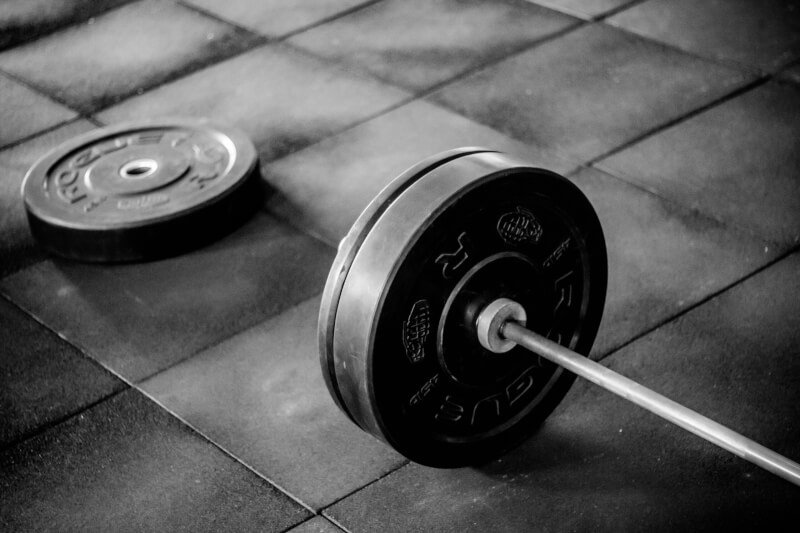If you’re looking to take your fitness routine to the next level, plyometric exercises might just be the answer you’ve been searching for. These explosive, high-intensity movements have been proven to enhance speed, power, and overall athletic performance. However, it’s important to approach plyometrics with caution and ensure proper form and technique to avoid injuries. In this article, we will guide you through the steps to safely incorporate plyometric exercises into your routine, so you can reap the benefits without any setbacks. So, get ready to elevate your fitness game and unleash your inner athlete!

Choosing the Right Plyometric Exercises
When it comes to incorporating plyometric exercises into your routine, there are a few key factors to consider. First and foremost, it’s important to determine your current fitness level. By understanding where you stand in terms of strength, endurance, and overall fitness, you can better select plyometric exercises that are appropriate for your abilities.
Consulting with a professional, such as a fitness trainer or physical therapist, can also be incredibly helpful. These experts can assess your fitness level, identify any specific areas that need improvement, and provide guidance on which plyometric exercises will be most beneficial for you. They can also teach you proper form and technique, ensuring that you perform each exercise correctly and minimize the risk of injury.
Additionally, it’s important to consider your goals when selecting plyometric exercises. Are you looking to improve your athletic performance, increase strength and power, or simply add variety to your workouts? Understanding your goals will help you choose exercises that align with your desired outcomes.
Safety Precautions
Safety should always be your top priority when incorporating plyometric exercises into your routine. To minimize the risk of injury, follow these safety precautions:
Warming Up and Cooling Down
Before diving into a plyometric workout, it’s crucial to properly warm up your muscles. This can help increase blood flow, improve flexibility, and prepare your body for more intense exercises. Dynamic stretches, such as leg swings and arm circles, are great for warming up. After your plyometric workout, be sure to cool down with static stretches to help prevent muscle soreness and promote recovery.
Using Proper Form
Proper form is essential to prevent injuries during plyometric exercises. Take the time to learn and understand the correct technique for each exercise. Focus on landing softly and absorbing the impact using your muscles rather than your joints. Maintain a neutral spine and engage your core throughout each movement.
Starting Slowly
When beginning plyometric training, it’s important to start slowly and gradually increase intensity. Allow your body time to adapt to the demands of plyometric exercises. Begin with low-impact variations and shorter durations, then progressively increase the volume and intensity as your fitness level improves.
Avoiding Overtraining
Overtraining can lead to fatigue, decreased performance, and an increased risk of injury. It’s important to listen to your body and incorporate adequate rest and recovery days into your routine. Strive for a balance between challenging workouts and giving your body the time it needs to repair and rebuild.
Implementing Plyometric Exercises
Once you’ve established the necessary safety precautions, it’s time to implement plyometric exercises into your routine. To do so effectively, consider the following steps:
Identifying Targeted Areas
Plyometric exercises can target various muscle groups, so it’s important to identify the areas you want to focus on. Whether it’s lower body strength, upper body power, or overall explosiveness, understanding your target areas will help you select the appropriate exercises.
Designing a Plyometric Workout
Designing a well-rounded plyometric workout involves selecting exercises that challenge your target areas while maintaining a balanced approach. This means incorporating exercises for the upper body, lower body, and core. It’s also important to include exercises that target different movement patterns, such as jumping, hopping, and lateral movements, to enhance overall athleticism.
Progressing Gradually
As with any form of exercise, progression is key to continue challenging your body and seeing improvements. Start with basic variations of plyometric exercises and gradually increase intensity, duration, or difficulty as your abilities improve. This gradual progression will ensure that you continue to push yourself without risking injury or burnout.
Equipment and Environment
The right equipment and environment can greatly impact the effectiveness and safety of your plyometric workouts. Consider these factors when incorporating plyometric exercises into your routine:
Selecting Suitable Footwear
Having the right footwear is crucial for plyometric exercises. Look for shoes with good cushioning and support to absorb the impact of jumps and landings. Cross-training shoes or those specifically designed for high-impact activities are ideal. Avoid using running shoes, as they may not provide adequate support for the lateral movements involved in many plyometric exercises.
Choosing the Right Surface
The surface you perform plyometric exercises on can also affect your safety and performance. Opt for a surface that provides some shock absorption, such as a rubberized floor or sports mat. Avoid hard surfaces like concrete, as they can increase the risk of joint injuries. An even and non-slip surface will help you maintain stability and reduce the risk of slips or falls.
Utilizing Appropriate Equipment
While many plyometric exercises can be performed with just your bodyweight, incorporating equipment can add variety and challenge to your workouts. Items such as plyometric boxes, resistance bands, and medicine balls can be used to enhance the intensity and effectiveness of your exercises. Choose equipment that is suitable for your fitness level and goals.

Incorporating Plyometrics into Your Routine
Integrating plyometric exercises into your routine should be done thoughtfully to ensure a balanced and effective workout. Consider the following strategies:
Integrating Plyometrics with Other Exercises
Rather than exclusively focusing on plyometric exercises, it’s beneficial to integrate them with other forms of exercise. For example, you can combine upper body strength training exercises, such as push-ups or tricep dips, with explosive plyometric movements like plyo push-ups or clap push-ups. This combination allows you to target different muscle groups and maximize your workout.
Creating a Balanced Workout
To prevent muscle imbalances and promote overall fitness, it’s important to create a well-rounded workout routine. Incorporate cardio exercises, strength training, flexibility work, and plyometrics to ensure that you’re addressing all aspects of fitness. This balanced approach will lead to greater improvements and minimize the risk of overuse injuries.
Scheduling Rest Days
While it’s tempting to push yourself every day, rest days play a vital role in your overall progress. Plyometric exercises place significant stress on your muscles and joints, so it’s crucial to allow them time to recover. Schedule rest days between plyometric workouts to give your body the opportunity to repair and rebuild, reducing the risk of overtraining and injury.
Modifications and Alternatives
Plyometric exercises can be challenging, especially for beginners or individuals with specific limitations. However, there are modifications and alternative exercises available to suit varying needs:
Low-impact Plyometric Exercises
If you have joint issues or want to minimize the impact on your body, low-impact plyometric exercises are a great option. These exercises focus on controlled movements with less jumping and landing. Examples include standing long jumps, step-ups, or controlled lateral bounds. Low-impact variations still provide the benefits of plyometrics while reducing the stress on your joints.
Bodyweight Modifications
Not everyone has access to equipment or wants to incorporate additional tools into their workouts. Fortunately, plyometric exercises can be modified to use only your bodyweight. Exercises like squat jumps, burpees, or mountain climbers are effective examples of bodyweight plyometric exercises that target a range of muscles and improve cardiovascular fitness.
Utilizing Resistance Bands
Resistance bands can add an extra challenge and variety to your plyometric exercises. By incorporating bands into exercises such as squat jumps or lateral bounds, you increase the resistance and force production required by your muscles. This can lead to greater strength and power gains. Choose resistance bands with appropriate resistance levels that align with your fitness level and goals.

Listening to Your Body
When incorporating plyometric exercises into your routine, it’s crucial to listen to your body and prioritize your overall well-being. Pay attention to the following aspects:
Recognizing Warning Signs
Your body has a way of communicating when something isn’t right. Pay attention to any pain, discomfort, or unusual sensations during or after your plyometric workouts. These may be warning signs of potential injury or overtraining. If something feels off, it’s important to take a step back, reassess, and potentially seek guidance from a healthcare professional.
Rest and Recovery
Rest and recovery are essential components of any successful fitness routine. Adequate rest allows your muscles to repair and grow stronger. Listen to your body’s signals and take rest days when needed. Incorporate recovery techniques such as stretching, foam rolling, or even seeking out other modalities like massage or acupuncture to promote proper recovery.
Seeking Medical Advice
If you experience persistent pain or have underlying health conditions, it’s important to consult with a healthcare professional before incorporating plyometric exercises into your routine. They can provide personalized advice and guidance based on your individual needs and help ensure that you’re exercising safely and effectively.
Muscles and Benefits
Plyometric exercises engage various muscle groups and offer an array of benefits. Understanding the muscles involved and the advantages of plyometrics can further motivate and inform your training:
Engaged Muscles in Plyometrics
Plyometric exercises primarily target the muscles in your lower body, including the calves, quadriceps, hamstrings, and glutes. However, they can also engage muscles in the upper body, such as the chest, shoulders, and arms. Plyometrics involve explosive movements that require coordination and power from multiple muscle groups, resulting in a full-body workout.
Strength and Power Development
Plyometric exercises are excellent for developing strength and power. By performing explosive movements, you stimulate fast-twitch muscle fibers that are responsible for generating force quickly. This improves your ability to generate power in activities such as sprinting, jumping, or throwing. Increased strength and power can enhance athletic performance and everyday activities.
Improved Athletic Performance
Whether you’re an athlete or simply looking to improve your fitness level, incorporating plyometric exercises into your routine can greatly enhance your overall athletic performance. Plyometrics improve coordination, balance, agility, and explosive power—qualities that are beneficial in a wide range of sports and physical activities.

Common Mistakes to Avoid
To ensure a safe and effective plyometric workout, be mindful of these common mistakes:
Neglecting Proper Technique
Proper technique is crucial to reaping the benefits of plyometric exercises and minimizing the risk of injury. Avoid rushing through exercises or sacrificing form for speed. Take the time to learn and practice the correct technique for each exercise, focusing on proper landing mechanics and controlled movements.
Skipping Proper Warm-up/Cool-down
Skipping the warm-up or cool-down can increase the risk of injury. These crucial components prepare your body for exercise and aid in recovery. Warm up with dynamic stretches and movement-based exercises, and cool down with static stretches to gradually decrease your heart rate and promote muscle recovery.
Pushing Beyond Limitations
While it’s important to challenge yourself, it’s equally important to respect your limitations. Pushing beyond what your body is ready for can lead to injury and setbacks. Start with exercises that align with your current fitness level and gradually progress as you become stronger and more comfortable. Listen to your body and understand the difference between pushing yourself and overexertion.
Monitoring and Tracking Progress
To effectively track your progress and stay motivated, implement these strategies:
Setting Measurable Goals
Setting specific, measurable goals is key to tracking your progress. Whether it’s increasing the height or distance of your jumps, improving your time in a certain exercise, or increasing the number of repetitions, having concrete goals provides clarity and motivation. Write down your goals and regularly assess your progress.
Recording Workouts and Results
Keep a workout journal or use a fitness-tracking app to record your plyometric exercises, including the sets, repetitions, and any modifications or progressions. By documenting your workouts and tracking your results, you can visually see your progress over time, identify areas for improvement, and celebrate your achievements.
Periodic Fitness Assessments
Periodically assessing your fitness level can help you gauge your progress and make necessary adjustments to your routine. Assessments such as timed runs, vertical jumps, or strength tests can offer insights into your improvements and help you target specific areas for further growth. Conduct these assessments every few weeks or months to track your journey effectively.
Incorporating plyometric exercises into your routine can provide numerous benefits, from increased strength and power to improved athletic performance. By following the outlined guidelines and considering your fitness level, goals, and safety precautions, you can safely and effectively integrate plyometrics into your workouts. Remember to listen to your body, respect your limitations, and monitor your progress to achieve optimal results. Happy training!



